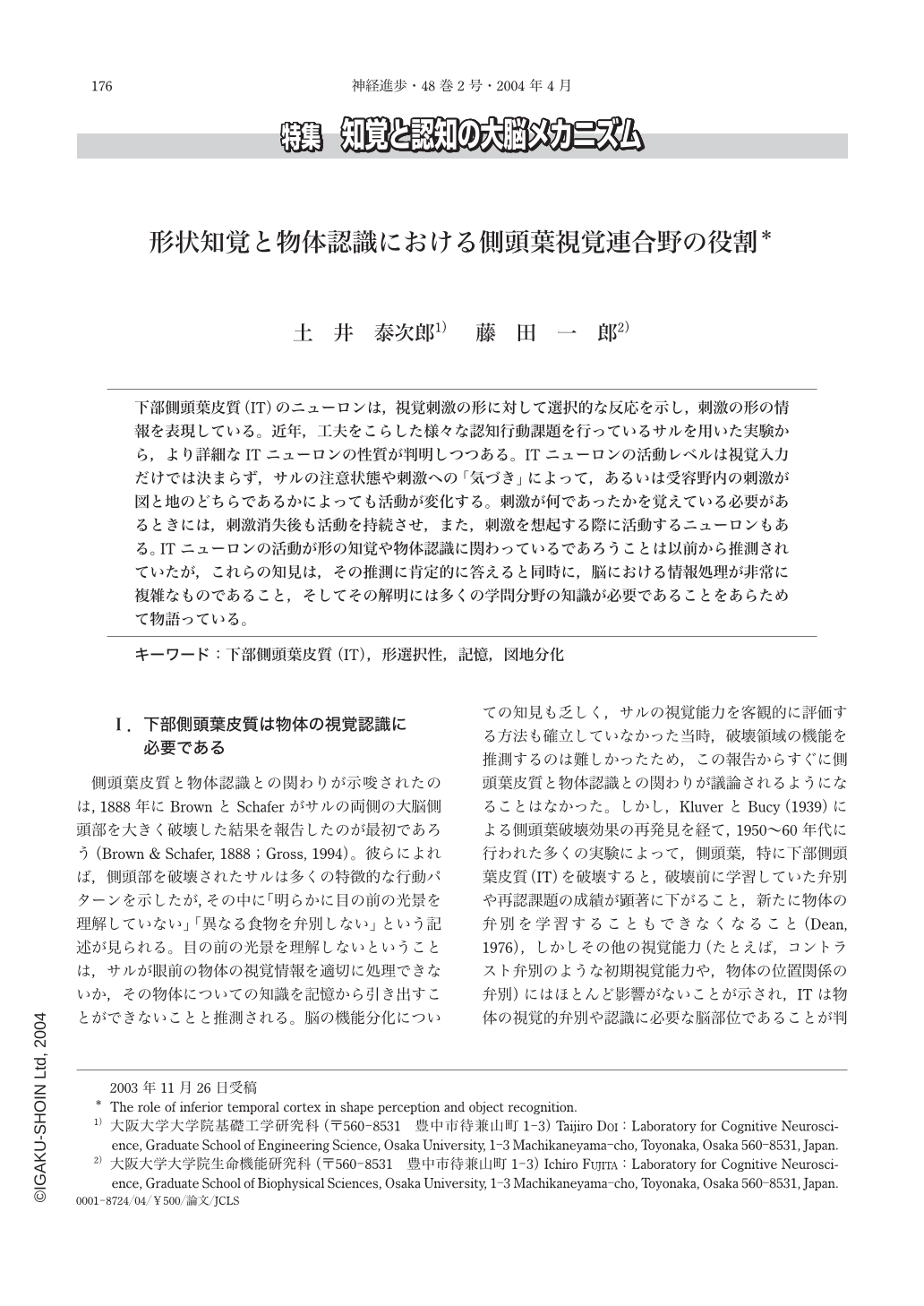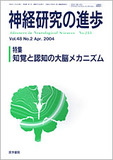Japanese
English
- 有料閲覧
- Abstract 文献概要
- 1ページ目 Look Inside
下部側頭葉皮質(IT)のニューロンは,視覚刺激の形に対して選択的な反応を示し,刺激の形の情報を表現している。近年,工夫をこらした様々な認知行動課題を行っているサルを用いた実験から,より詳細なITニューロンの性質が判明しつつある。ITニューロンの活動レベルは視覚入力だけでは決まらず,サルの注意状態や刺激への「気づき」によって,あるいは受容野内の刺激が図と地のどちらであるかによっても活動が変化する。刺激が何であったかを覚えている必要があるときには,刺激消失後も活動を持続させ,また,刺激を想起する際に活動するニューロンもある。ITニューロンの活動が形の知覚や物体認識に関わっているであろうことは以前から推測されていたが,これらの知見は,その推測に肯定的に答えると同時に,脳における情報処理が非常に複雑なものであること,そしてその解明には多くの学問分野の知識が必要であることをあらためて物語っている。
Inferior Temporal cortex(IT)is known for its importance in processing information of shape. Monkeys with lesions in IT cortex show severe deficits in shape discrimination tasks, leaving other visual abilities almost normal. Most neurons located in IT show selectivity for stimulus shape. Responses of some IT neurons show invariance to large changes in the stimulus position, size, and contour cues such as luminance, motion, texture, and binocular disparity. These neurons are thought to provide the neural basis of position-, size-, and cue-invariant object recognition. Recent studies on IT neurons have revealed new aspects of their intricate response characteristics. Activity of IT neurons depends not only on visual stimuli projected onto the retina, but also on the monkey's attentional state. Single IT neurons can signal different information at different points of time during their visual responses;early responses signal the stimulus category, and later ones transmit more detailed information related to the stimulus identity. When binocularly rivalrous stimuli are presented, activities of IT neurons parallel with the monkeys'subjective perception inferred from their behavioral responses, indicating a close link between neuronal activity in IT and subjective perception. Shape-selective IT neurons are also involved in recognition of an object. Intra-and/or inter-cortical networks in IT can change with learning of a pairing of two arbitrary items to form an association memory. A gradually rising activity of some IT neurons during the memory phase of a memory task may correspond to the retrieval processes of such memory. Further, IT neurons can discriminate the figure and the ground, even when the stimulus contour itself does not provide information sufficient for determining which side of the contour is the figure. IT neurons thus process and represent shape information in a manner useful for shape perception, change their stimulus selectivity dynamically with time, integrate information of many visual cues such as luminance, color, motion, binocular disparity, and play a role in memory retrieval. Through these processing, IT contributes to perception and recognition of objects.
(Received:November 26, 2003)

Copyright © 2004, Igaku-Shoin Ltd. All rights reserved.


